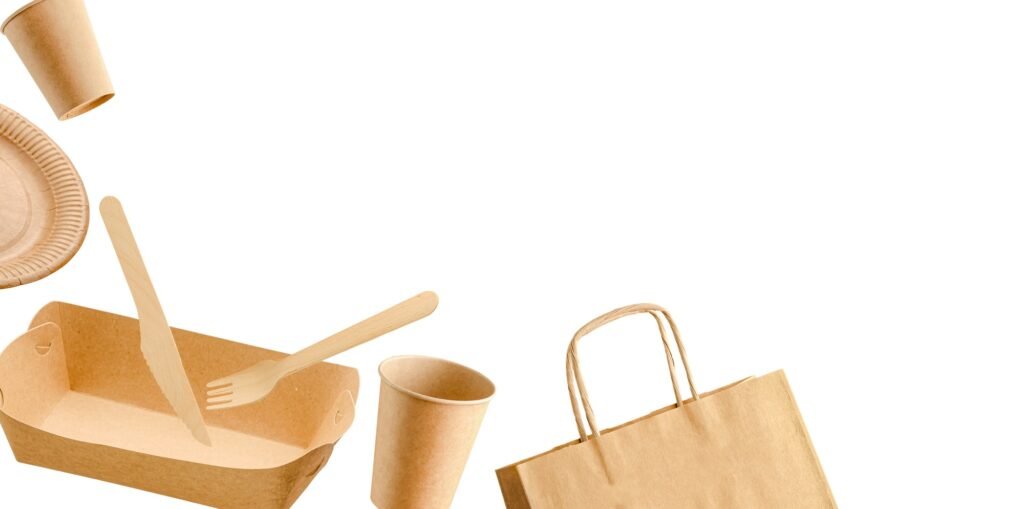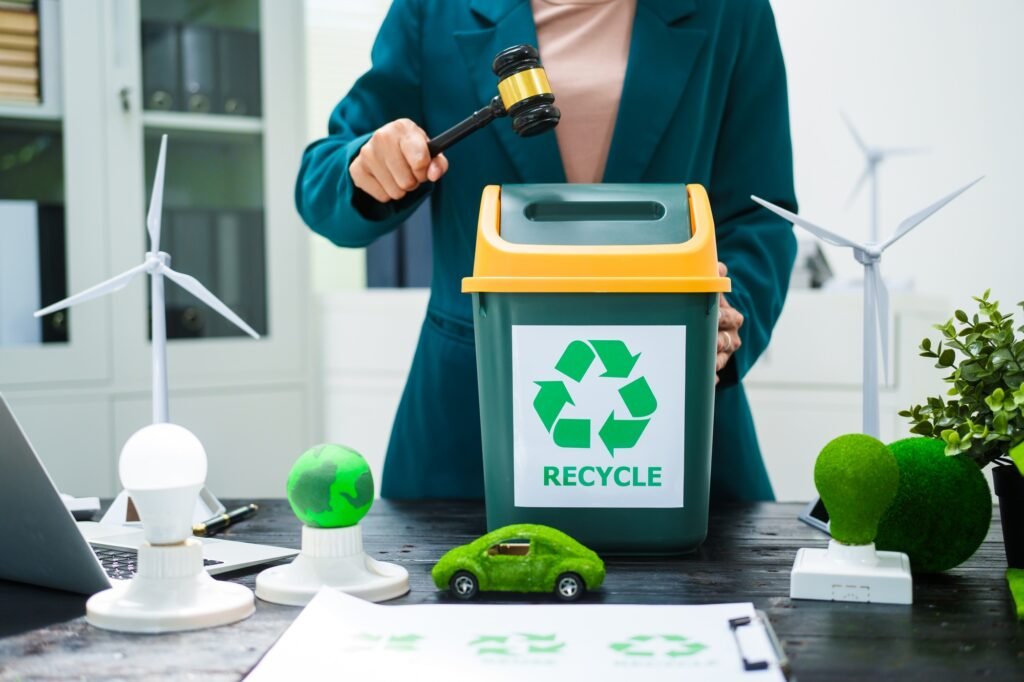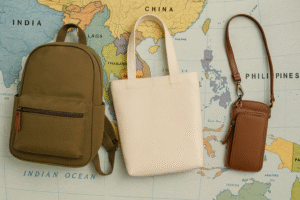Introduction: The green mission of the Bag Brands
Traditional Bag production is highly dependent on petrochemical resources, high-energy consumption processes and disposable packaging. In the context of global sustainable transformation, it is no longer suitable for market demand. Green manufacturing is becoming a common issue faced by Bag manufacturers, Bag brands and buyers.
note: A green commitment is not only an environmental responsibility, but also a future asset for the company.

Traditional Bags Manufacturing VS Sustainable Bags Manufacturing
| Index | Traditional Manufacturing | Sustainable Manufacturing |
|---|---|---|
| Sources | Petroleum-based synthetic, animal leather | rPET, organic cotton, natural fibers, plant-based leather |
| Water consumption | High (cotton, dyeing process) | Low (closed-loop dyeing, water-saving cultivation of raw materials) |
| Energy structure | Fossil fuels | Renewable energy such as solar energy and wind energy |
| Waste Disposal | Low recycling rates, waste fabrics go to landfills | Recycling of production waste and recycling of products |
| User Engagement | Use-Discard | Repair, Recycling, Secondary Use |
| Brand Image | No obvious environmental label | Enhance international reputation and attract environmentally conscious customers |
Why choose sustainable bag manufacturing?
- Regulations drive: European and American markets have gradually strengthened compliance requirements for carbon emissions, packaging, and raw materials.
- Shift in consumer preferences: 68% of consumers prefer to buy environmentally friendly products (Source: Nielsen IQ, 2024).
- Long-term brand assets: Eco-labels will become a key asset that distinguishes brands from currency.

SumkBags: A practitioner bag brands of sustainable development
SumkBags is a professional bag manufacturer brand dedicated to the integration of environmental protection and functionality. Through a series of practices, we actively build a green supply chain to help customers achieve ESG goals.
SumkBags core environmental protection measures:
- ✅ All products contain at least 30% rPET materials
- ✅ All packaging uses FSC certified paper + plastic-free raffia rope
- ✅ Some products support “old for new”, we recycle and sort the old bags, and classify them for reprocessing
- ✅ Solar panels are laid on the roof of the factory, generating about 350,000 kWh of electricity per year, which is equivalent to reducing carbon dioxide emissions by 180 tons
- ✅ Obtained GRS and BSCI dual certification to ensure environmental and labor compliance
🌱 “We believe that every bag can have a second life.” —— Founder of SumkBags
Environmental material impact assessment (by bag life cycle)
| Material Type | Carbon footprint (kg CO₂/unit) | Degradability | Consumer acceptance | Cost index (1~5) |
|---|---|---|---|---|
| polyester | 7.0 | ❌ | high | 💲 |
| rPET | 3.5 | ❌ | high | 💲💲 |
| Organic Cotton | 2.8 | ✅ | Medium to high | 💲💲💲 |
| Pineapple Leaf Fiber | 2.2 | ✅ | Emerging, high | 💲💲💲💲 |
| Mushroom Leather | 1.9 | ✅ | Medium | 💲💲💲💲💲 |
Note: Carbon footprint data is the average emission on the material side, which actually depends on the process and transportation method.
FAQ: Frequently Asked Questions by Bag Brands & Manufacturers & Buyers
Q1: How can small Bag factories start sustainable transformation?
A: You can start with packaging, such as using recycled cartons and plastic-free materials; secondly, choose 1~2 main packaging bags to pilot the use of rPET, and gradually test market feedback.
Q2: Are there environmental standards that can be used as procurement indicators?
A: Yes, common standards include: GRS (Global Recycling Standard), OEKO-TEX (harmless materials), FSC (paper source certification), BSCI (social responsibility compliance), etc.
Q3: Does sustainable materials affect production delivery?
A: If you plan materials in advance, there will be basically no delay. SumkBags currently has a stable rPET fabric supply period of 10~12 days, which is better than the industry average.
Q4: Which national markets have the most stringent requirements for sustainable packaging?
A: The European Union, Japan, Canada and California, USA, all have clear plastic packaging restrictions. Many large retailers also set their own green procurement thresholds.
Global Green Regulation Trends (to 2025)
| Region | Regulatory/Policy Direction | Implementation time | Impact on bags manufacturing |
|---|---|---|---|
| European Union | Revised Packaging and Packaging Waste Directive (PPWD) | 2024-2025 | Ban multiple plastic bags and composite packaging |
| California, USA | Degradable packaging obligations | From July 2024 | Require e-commerce product packaging to be 50% biodegradable |
| Japan | Plastic Resource Recycling Act | From 2022 | Encourage the use of reusable/degradable materials |
| China | Plastic Pollution Control Action Plan | Continue to advance | Industrial packaging needs to be reduced and recyclable |

Conclusion: Towards Sustainable Growth
Making an eco-friendly bag is not just about changing a piece of material, but also about driving the industry towards a smarter, energy-saving and responsible direction.
Whether you are a brand, factory or distributor, choosing environmental protection is not only a response to the market, but also an opportunity to plan for the future in advance.
Want to cooperate with SumkBags on a green bag project?
We provide eco-friendly material selection suggestions, customized development and packaging improvement services to help you create a product line that combines environmental protection concepts with market competitiveness.
📩 Contact us: Bruce@shenxiucaps.com
🌍 More information: sumkbags.com




